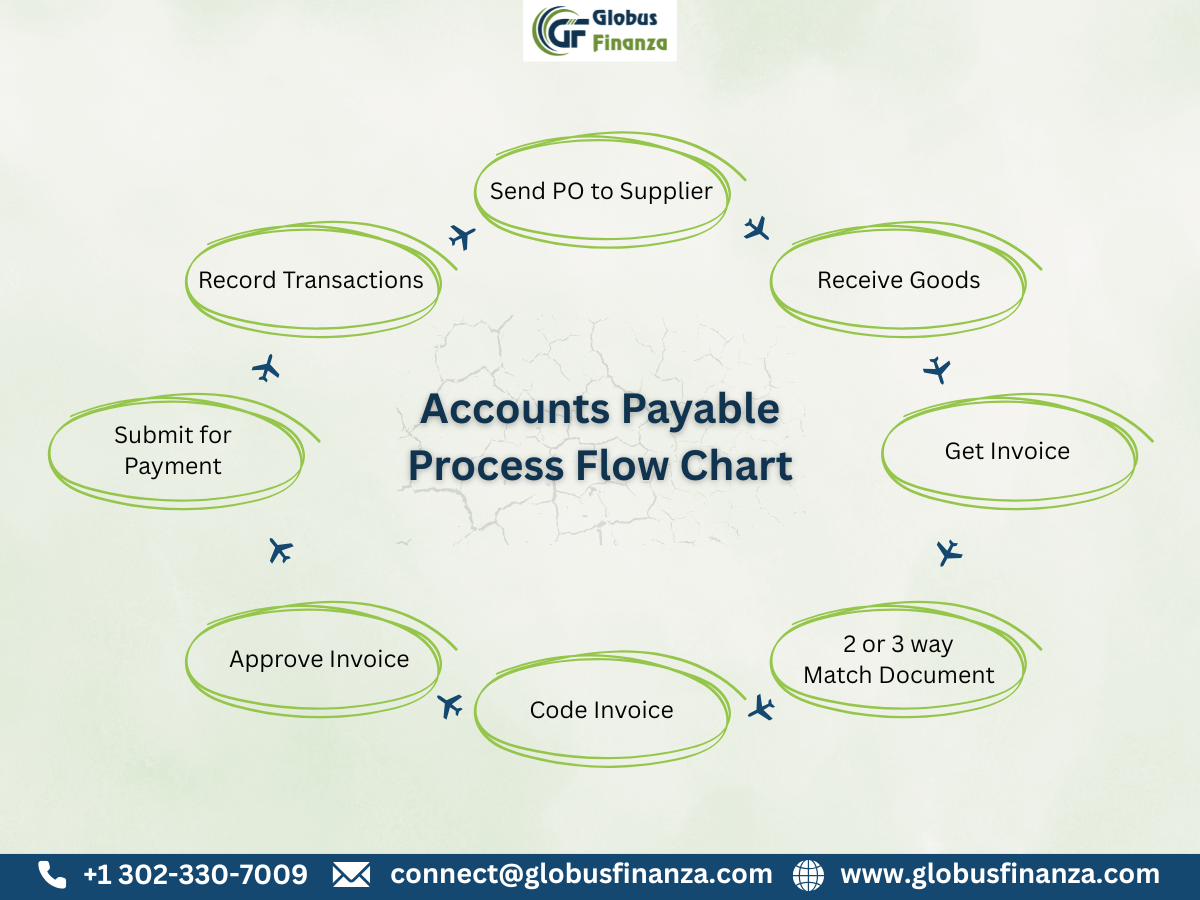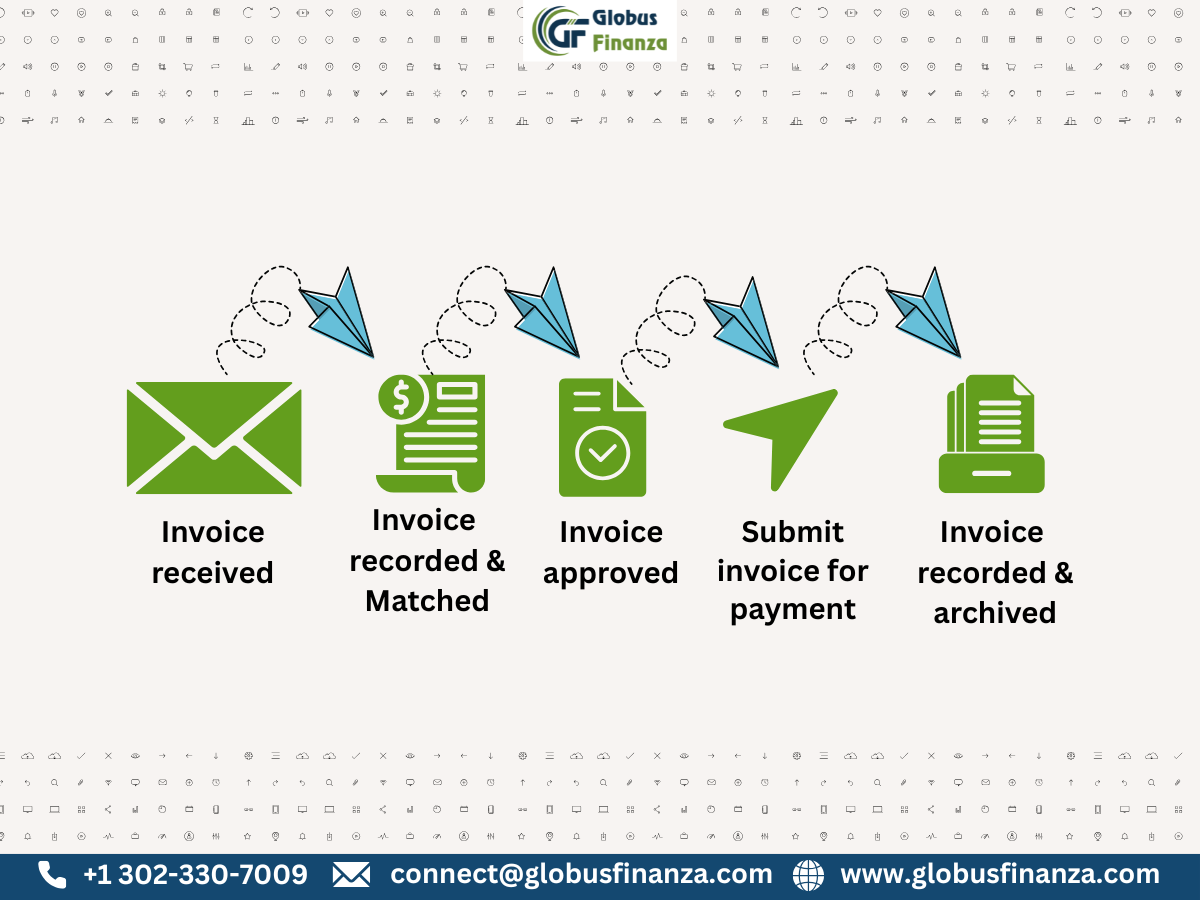
Understanding the Full Cycle Accounts Payable Process
No matter how big or small a business is, success often depends on how well it manages spending and earns money. A big part of tracking spending is having a strong accounts payable (AP) process.
In a business system called procure-to-pay (or P2P), the AP process plays a major role. It covers everything a company does to make a purchase—starting with ordering and ending with paying and recording the transaction.
If this process isn’t in place, a company could miss bill payments, which hurts vendor relationships and may even cause money problems. That’s why it’s important to understand how the full cycle of accounts payable works and how it can be improved.
In this article, we’ll explore:
-
What the full accounts payable process includes
-
A helpful flow chart of the AP process
-
Common problems that happen in AP
-
And how modern tools—like automation—are changing the game
What Is the Full Cycle Accounts Payable Process?
The full cycle accounts payable process includes everything a company does to manage and complete payments to vendors and suppliers. It’s part of a system called procure-to-pay, which means buying and paying for goods or services. This process helps a business stay organized, pay bills on time, and keep good relationships with vendors.
Here’s what happens in the full AP cycle:
-
Creating and sending a purchase order
-
Getting approval to move forward
-
Receiving and checking the invoice
-
Matching the invoice with the purchase order and delivery receipt
-
Adding invoice details into the system (called coding)
-
Paying the invoice
-
Recording the payment in company records
Globus Finanza can also break this down into four main steps:
-
Invoice capture – Getting the invoice
-
Invoice approval – Making sure it’s okay to pay
-
Payment authorization – Getting the final approval
-
Payment execution – Sending the money
The AP (accounts payable) team is responsible for:
-
Reviewing and processing all invoices
-
Making sure the company pays bills on time
-
Showing vendors and banks that the company is reliable
-
Catching any wrong or fake invoices by checking them with the purchase order
All of this can sound like a lot of work—especially for busy offices—but using smart accounting software makes the job much easier. Today, automation tools can read invoices, match them with orders, and save time by reducing manual data entry. This lets the team focus on more important things to help the business grow.
Accounts Payable Process Flow Chart

An accounts payable process flow chart shows the step-by-step path a company follows to pay for things it buys.
Here are the main steps:
-
Send a purchase order to the supplier – This is like placing an official order for something your business needs.
-
Receive and check the goods – When the items arrive, the company inspects them to make sure everything is correct.
-
Get the invoice – The supplier sends a bill that shows how much the items cost.
-
Match documents (2-way or 3-way) – This means comparing the invoice to the order and delivery to make sure everything matches.
-
Code the invoice – The invoice is labeled and entered into the system properly.
-
Send the invoice for approval – Someone in charge checks and approves the payment.
-
Submit the invoice for payment – Once approved, it’s ready to be paid.
-
Record everything in the general ledger (GL) – This is the company’s official financial record.
This process helps make sure that companies only pay for what they actually ordered and received, and that all spending is tracked.
Invoice Processing Flow Chart (Simple Steps)

This flow chart shows how a company handles bills (invoices) from suppliers:
-
Get the invoice – The company receives a bill from a supplier for goods or services.
-
Match the documents – They check the invoice against the original order and delivery to make sure everything is correct.
-
Send for approval – Someone in charge reviews and approves the invoice.
-
Pay the invoice – Once approved, the company pays the bill.
-
Record the payment – The payment is added to the company’s official financial records (called the general ledger or GL).
What Is a Three-Way Match?
A three-way match is a way businesses check that they are paying the right amount for what they ordered.
It compares three important documents:
-
Purchase Order (PO) – This shows what the company ordered and how much it should cost.
-
Receiving Report – This shows what the company actually received from the supplier.
-
Invoice – This is the bill sent by the supplier asking for payment.
The accounts team checks all three documents to make sure there are no mistakes with the payment. If there’s a problem—like paying too much—they can catch it early. This also makes audits (money checks) easier.
Sometimes, businesses use other matching methods:
-
2-way match compares just the purchase order and the invoice.
-
4-way match adds one more step to the 3-way match: checking and inspecting the goods after delivery.
The 4-way match is the safest but takes more time. Small businesses usually use the 2-way match because their purchases are simpler.
But for most businesses, the 3-way match works best. It helps find problems early and keeps payments smooth. The accounts team has to be quick and careful—mistakes can slow down deliveries and upset suppliers.
The Flow of Full Cycle Accounts Payable
You can think of accounts payable (AP) as the link between buying things and paying for them. The process works in two ways: one is upstream, and the other is downstream.
- Upstream: This part is about purchasing. The business finds the right suppliers, negotiates contracts, and sets payment terms. It's about making sure the company gets the best deal while managing risks and finding the right vendors.
- Downstream: After the purchase, goods and services are received, and invoices are checked. The accounts payable team makes sure the invoice matches the original order and pays it on time. If the business doesn’t have a good system, they might miss payment deadlines and end up paying late fees.
AP is responsible for almost every purchase a business makes, except for payroll. The team also looks for ways to save money and get discounts.
In both the upstream and downstream processes, it’s important to reduce mistakes, work more efficiently, and make improvements to stay productive and have better control over the process. Managing risk is important in both parts of the process.
Challenges of the Accounts Payable Cycle
The accounts payable (AP) team is always busy, often dealing with a lot of manual tasks like handling paper invoices, entering data, managing cash, and keeping track of payment dates. These jobs can be difficult, especially when many different systems are used together to make payments.
Both small businesses and big companies face problems like using old technology, not having enough staff, poor planning, and trouble managing cash. Some other common issues are:
- Paying the same bill twice
- Losing vendor invoices
- Slow approval process
- Incorrect balance sheets
- Late payments and extra fees
The AP process works like a clock—every part must work together perfectly. Even a small mistake can cause delays, damage relationships with vendors, or make the company lose money from missed discounts.
To solve these problems, many businesses are using AP automation. It helps avoid mistakes, speeds up invoice approval, makes sure payments are on time, and improves the overall process.
Automation: The Answer You’ve Been Looking For
Small businesses often use spreadsheets to track financial statements, expense reports, and budgets. But using automation in accounts payable (AP) makes everything easier.
With automation, your team doesn’t have to chase people for signatures, type in data by hand, or waste time on boring, repeated tasks. This not only saves time and money but also lets employees focus on more creative and important work.
Going paperless with automation is also better for the environment. Many companies are now using smart systems that do jobs automatically. With the right software (called an ERP system), invoices can be matched with purchase orders and entered into the system without anyone touching a keyboard.
Some companies even use online portals where suppliers upload invoices directly, so there’s no need to scan or print anything. As a result, every invoice becomes digital, saving paper, reducing clutter, and cutting office supply costs. This also frees up resources that can be used to grow the business.
Accounting Software for Full Cycle Accounts Payable
Today, businesses use advanced digital tools to handle things like invoices, data entry, and tracking money going in and out. These tools make tasks much easier than they were in the past.
For small businesses, something as simple as an Excel spreadsheet can work well to track expenses, review reports, and manage basic accounting.
But bigger companies need more powerful tools. They often work with many vendors and have large teams. That’s why they use special accounting software to help manage vendor payments, team performance, and all parts of the accounts payable process.
QuickBooks
QuickBooks is a popular accounting software made by Intuit. It can do a lot more than just a spreadsheet.
For example:
-
Audit Trail: This feature shows the full history of any changes made to a transaction — like who changed it, when they changed it, and what they changed.
-
Roles and Permissions: You can give different people different levels of access. For example, you can make a special login just for your accountant.
Accounts Payable vs. Accounts Receivable
Accounts payable (AP) and accounts receivable (AR) are two important parts of a business.
-
Accounts Payable is the money your business owes to others, like suppliers or service providers.
-
Accounts Receivable is the money your business is owed by customers who bought something on credit.
AP is about paying bills. AR is about collecting money.
They exist because businesses don’t always pay or get paid right away. Since money moves on a schedule, AP and AR teams must work together to help the business plan its budget, pay on time, and make sure it always has enough cash.
conclusion
In many companies, the accounts payable (AP) process can slow things down and waste time. But using AP software makes things easier by turning every invoice into a digital one. This helps businesses pay vendors faster and keep good relationships with them.
Using automation also saves employees time and helps the company work better overall.
Even though the AP process can seem complicated, it doesn’t have to be hard. With the right knowledge, experience, and tools, any AP team can manage money and payments well. The key is using smart AP software. Want to learn more? Download our eBook, “The Ultimate Accounts Payable Survival Guide.”

